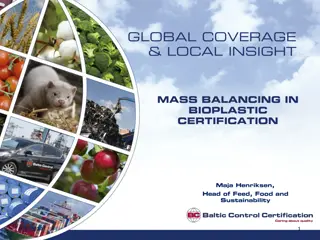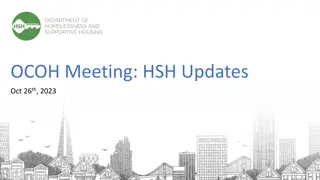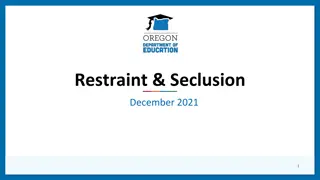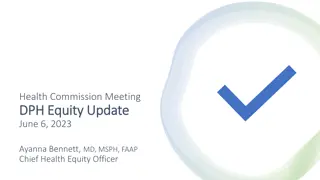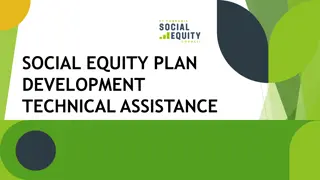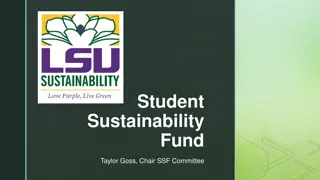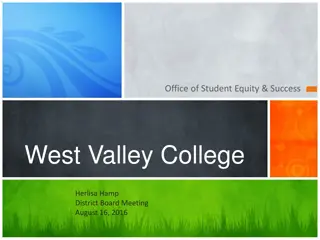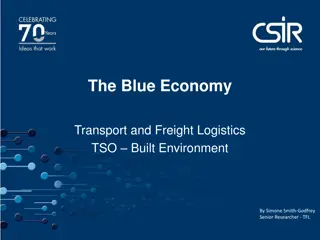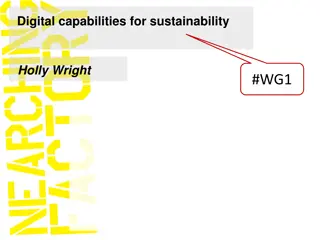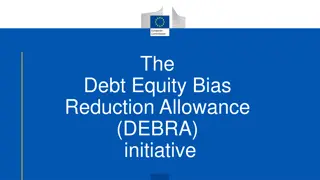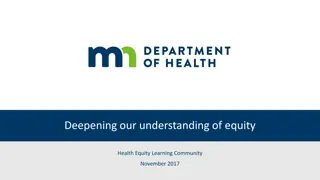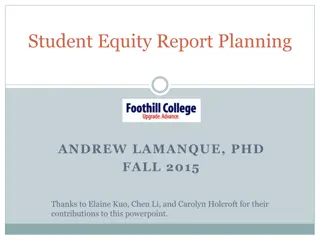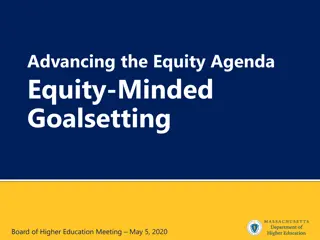Sustainability and Equity: A Better Future for All - Human Development Report 2011
Progress in human development is at risk due to environmental and inequality challenges, particularly affecting the most vulnerable populations. To achieve enhanced sustainability, it is crucial to address structural changes hand in hand with development aspirations. The intertwined nature of equity and sustainability necessitates their simultaneous realization for a sustainable and equitable future.
Download Presentation

Please find below an Image/Link to download the presentation.
The content on the website is provided AS IS for your information and personal use only. It may not be sold, licensed, or shared on other websites without obtaining consent from the author. Download presentation by click this link. If you encounter any issues during the download, it is possible that the publisher has removed the file from their server.
E N D
Presentation Transcript
Sustainability and Equity: A better future for all Human Development Report 2011 Name Place Date
MAIN MESSAGES Progress in human development is threatened by environmental and inequality trends Environmental threats hurt the poorest the most Development aspirations of poor people must go hand in hand with enhanced sustainability But larger structural changes are also needed Equity and sustainability are inextricably linked, one must be achieved with the other
Progress in human development is threatened by environmental and inequality trends
HDI losses from inequality largest in low and medium HDI countries Loss in HDI due to multidimensional inequality by HDI level
Gender Inequality and Sustainability Impact of disasters is much greater for women Driven by unequal exposure, access and capabilities Gender inequalities are associated with greater environmental degradation Countries with more women in parliament more likely to set aside protected land areas Positive synergy from women s participation Engaging women in disaster risk mapping associated with greater empowerment and resilience
Disparities in power aggravate unequal environmental impacts Power disparities shape patterns of deprivation Eg. Toxic waste facilities located predominantly in working class and minority neighbourhoods Empowerment can improve environmental sustainability Eg. relatively less deforestation in areas with more women s and environmental NGOs Developing countries and marginalized groups have proportionally less influence on global governance
Environmental threats hurt the poorest the most
Climate change exacerbates chronic environmental threats Rising global temperatures and sea levels Likelihood of natural disasters increasing average annual number doubled over 25 years Loss of ecosystems threatens livelihoods Low HDI countries experience greatest forest cover losses (11% since 1990) Poorest cannot replace lost ecological infrastructure (eg. mangroves) with built systems
Poorest countries worst affected by changes in rain Avg. value, 1951 - 1980 Avg. value, 2000s
The most disadvantaged people carry a double burden Double burden of the poor: vulnerability & deprivation Nearly 90% lack access to modern cooking fuels 80% lack adequate sanitation 35% lack clean water Overlapping deprivations revealed by our measures: 80% experience two or more deprivations 29% face all three.
Development aspirations of poor people must go hand in hand with enhanced sustainability
Learning from local success Numerous small scale programmes and projects are successful in promoting positive synergies. Community management of natural resources can lead to better environmental and human development outcomes. Access to affordable clean energy can lead to better health, education and economic outcomes.
Rising to the policy challenges: national levers for change Clean and safe environment a right not a privilege. Integrating equity into the design, implementation & monitoring of policies.
But larger structural changes are also needed
Development needs far exceed current levels of ODA
Macro shifts require global innovations New financing source: Currency Transactions Tax Feasibility of implementation and growing high-level support. Environmental finance Private-Public Partnerships Global Governance: Reforms to enable greater equity and access to finance. Participation and accountability locally, nationally and globally
On the way to Rio+20 Equity and environmental sustainability must go hand in hand Expanding choices of the poor the route to long term sustainability Empowerment, accountability and participation are of both intrinsic and instrumental value in this path
Expanding choices for current and future generations requires addressing both equity and sustainability HDR 2011 is about how this can and must be done

 undefined
undefined








 undefined
undefined





